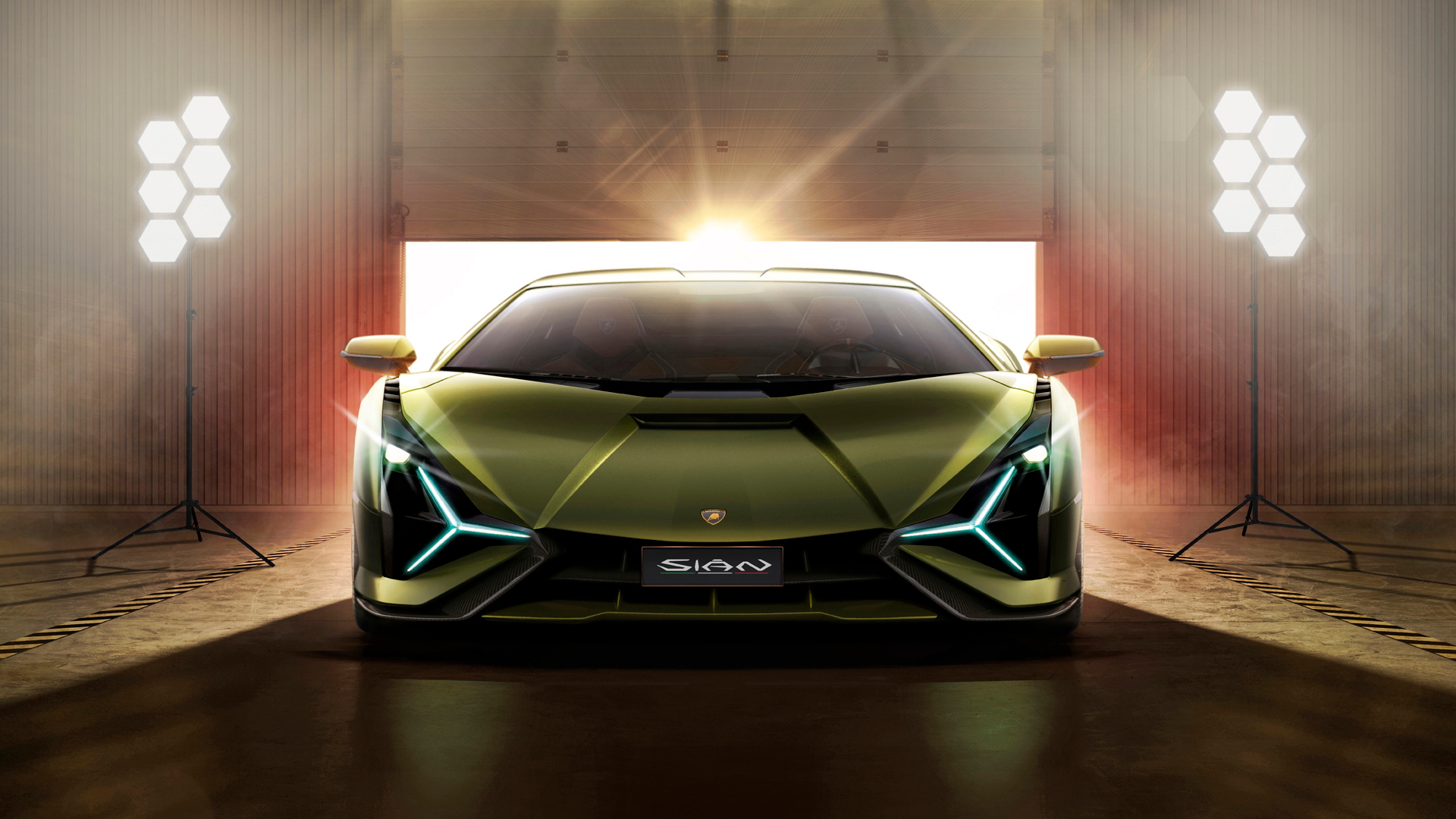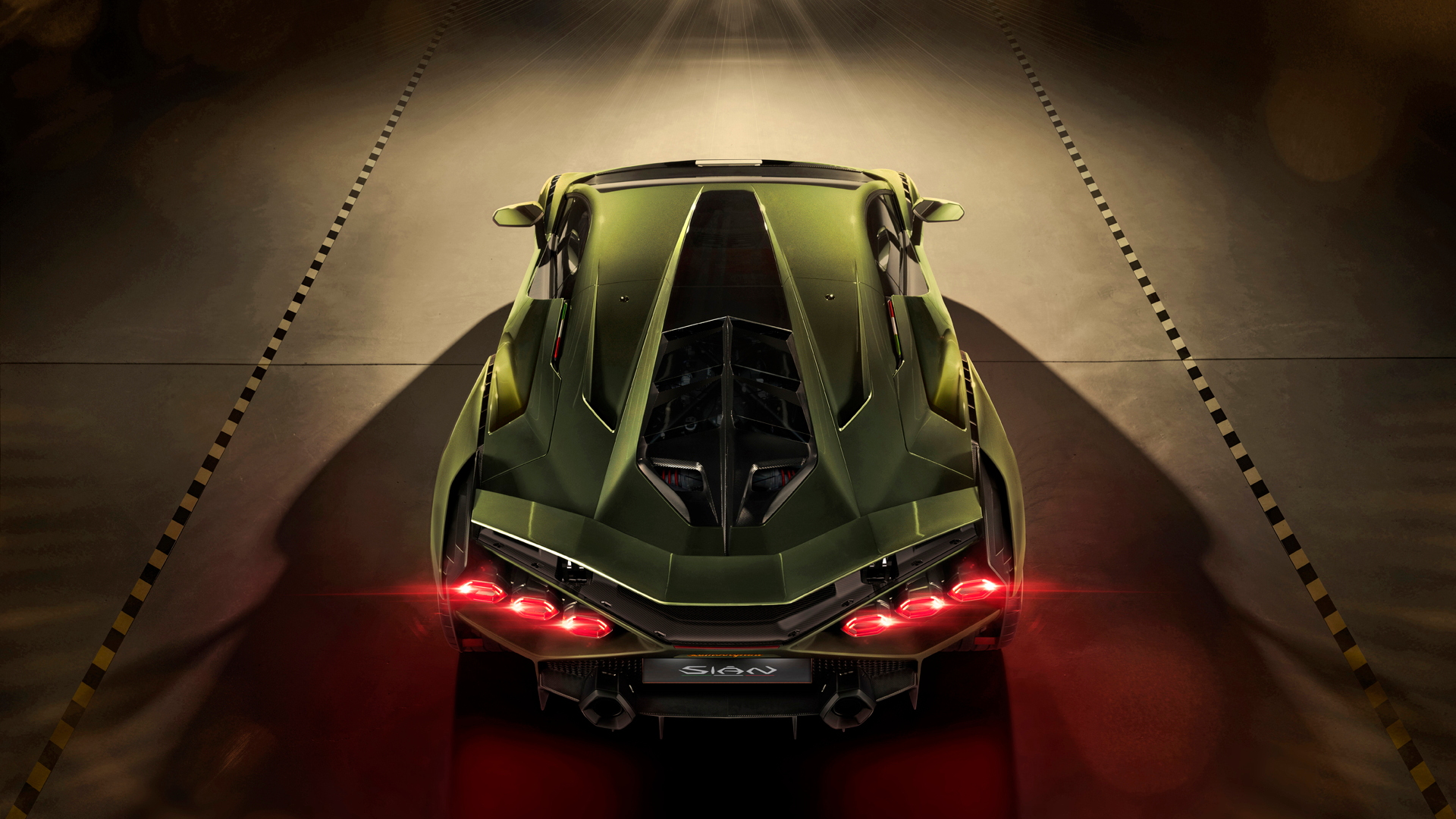When Lamborghini goes big, it's often a sight to behold. Feast your eyes upon the 807-horsepower Sián, the latest bull in Lamborghini's stable.
Normally, a car like the Sián might be referred to as a "mild" hybrid, but this is a Lamborghini; the "m" word doesn't really factor in. The Sián is motivated by a 774-hp V-12 (the most powerful the company has built) paired with a 48-volt e-motor that throws in another 34 horsepower at speeds up to 81 mph (after which it disconnects). The motor is located within the transmission to give it a direct link to the wheels.

Lamborghini Sián hybrid hypercar

Lamborghini Sián hybrid hypercar

Lamborghini Sián hybrid hypercar
Lamborghini quotes a 0-62 mph run of less than 2.8 seconds. All that power will push the Sián to a top speed of just under 220 mph. That's appropriate, as "Sián" means "flash" or "lightning" in the Bolognese dialect. Lamborghini says the hybrid system aids mid-range acceleration and the Sián is 0.2 seconds quicker than the Aventador SVJ when accelerating from 19 to 43 mph and 1.2 seconds quicker from 43 to 75 mph.
While 34 horsepower may not seem like much by some electric-assist standards, Lamborghini's approach was one of size and weight efficiency. Rather than a lithium-ion battery, the Sián employs a supercapacitor, which Lamborghini boasts is three times more powerful than a battery of equivalent weight. If you flip that equation around, it follows that the supercapacitor approach knocks two-thirds of the weight penalty off hybridization. Lamborghini locates the supercapacitor in the middle of the car, between the engine compartment and cockpit, where it helps provide ideal weight balance. Total system weight between the motor and supercapacitor is only 77 pounds, and Lamborghini says the Sián has a better power-to-weight ration than the Aventador SVJ due to increased use of lightweight materials.

Lamborghini Sián hybrid hypercar
One upside of the supercapacitor is that it is replenished every time the Sián brakes, meaning the extra oomph will always be there when called upon, especially on a racing circuit. Supercapacitors also provide quick shots of power, which is ideal for a supercar application. Lamborghini says the can run on electric power alone when reversing or during low-speed parking maneuvers, and the electric power provides torque fill during gearshifts.
A series-production hybrid hypercar from Lamborghini has been hotly anticipated since the Terzo Millennio concept was shown back in 2017. While the Sián may not be the plug-in many speculated it would be, it's still a revolutionary step for the Italian automaker and for hybrids in general due to the use of the supercapacitor.
Inside, the Sián boasts leather from high-end Italian furniture designer Poltrana Frau as well as 3D-printed parts.
Lamborghini looked to the Countach for the Sián's design inspiration, and we can see a bit of it, especially in the profile. The so-called Gandini line, the line defining the top of the profile and named for Lamborghini designer Marcello Gandini, is evident. The hood also features diagonal lines, just like the Countach.
But the Sián has a modern design as well. The Y-shaped headlights come from the Terzo Millennio, and the hexogonal taillights are pure modern Lamborghini, though they were also inspired by the Countach.
Thus far, we've only seen the renderings shown here of the car in Verde Gea (green) with Oro Electrum (gold) wheels. The paint also features gold flakes and gold crystals. The Sián in this color combination will debut in the flesh at the Frankfurt motor show on Sept. 10.
We don't know what the Sián will cost, but it doesn't really matter. Only 63 units will be produced (in honor of Automobili Lamborghini's founding year of 1963). Each lucky owner will be able to design the look of their car through Lamborghini's Ad Personam customizing program. Want to be one of them? Too bad. All 63 are already sold.
—Senior Editor Kirk Bell contributed to this report.





